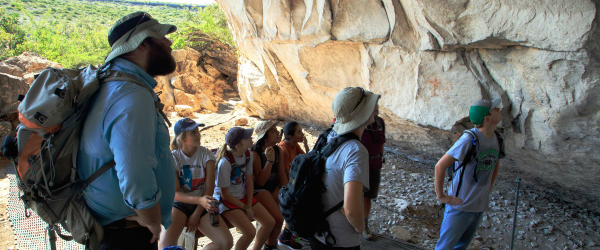Rock Art Archaeology

Comstock School teacher Kamye Tims co-teaches a Scientific Research class in conjunction with archaeologists at the Shumla Archaeological Research & Education Center, a nonprofit organization headquartered in Comstock, allowing the small district’s high school students to gain real-world experience.
During the first two years of the project, Comstock students helped digitally map the local Comstock Cemetery. They then presented their findings to the Texas Historical Commission – creating a new historical designation for the cemetery and the town’s approximately 500 residents. “This year, we’re having the kids document a local rock art site that is part of their heritage,” says Shumla archaeologist Jerod Roberts. “Using the same scientific research methods we use day-to-day, we are giving them a sense of what it is to be a rock art archaeologist.”
At the Tinaja Site along the lower Pecos River, the seven Comstock students taking the class are learning Shumla’s high-tech scientific method of rock art documentation, which includes the use of Total Data Station hardware and Geographic Information Systems software for mapping, high-resolution photography and 3-D modeling software for documentation and microscopes for close-up analysis of paint make-up and stratigraphy.
But according to Roberts, the most valuable lesson learned has been the critical thinking skills that will lead archaeologists to future discoveries. “While we’re doing this, we have asked the students to come up with research questions that can be answered by methods we use daily,” he says, noting that their questions are helping to answer questions no one has answered before.
“The tools and techniques our students have learned can be applied in many STEM fields,” says Comstock ISD superintendent O.K. Wolfenbarger. “What a great experience for our kids to take with them as they continue on to college and their future jobs.” #IAmTXEd Comstock ISD Shumla Archaeological Research & Education Center

